-
What's On
- Events
- Exhibitions
- Tours
-
Kids and families
- Australian Rules Football in books
- Board games from the past
- Bugs and Insects
- Build a bug
- Create Futuristic Fashion that is Out of this world!
- Create your Ultimate Party Menu
- Design your Dream Holden
- Make your (book) mark at home
- Millie Mak the Maker
- Out on the Town with Keifee the Koala
- What's in Pig's Suitcase?
- Students and teachers
- Collections
- Research
- Stories
- Visit us
- About Us
- Get involved
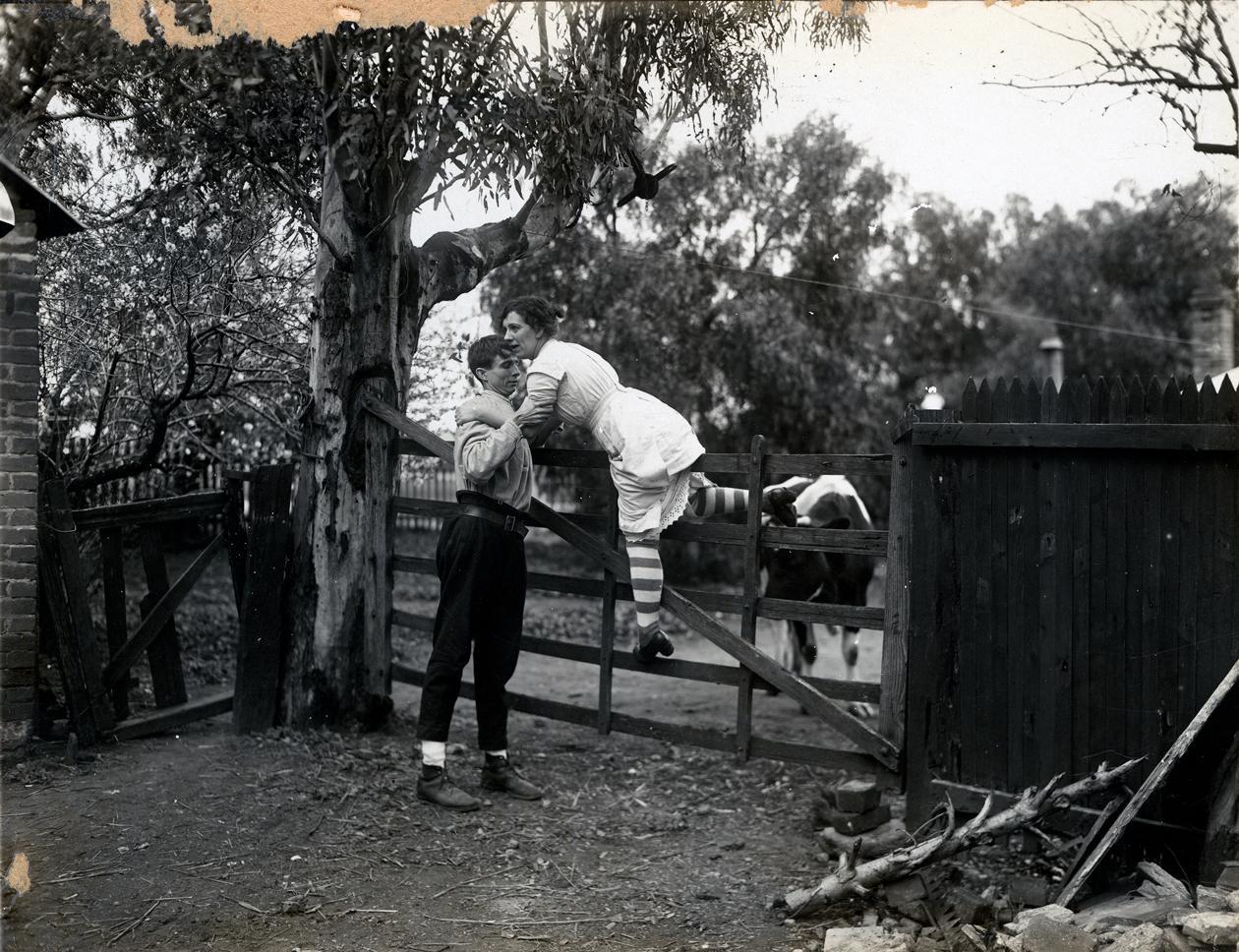
Algie’s Romance, a 'lost' film
Calling local history buffs with knowledge of the Mitcham Hills area!
Librarians love a research query challenge and finding the story behind the following four photographs in the Library’s digital collection has been keeping one of ours busy. The following four photos are believed to be ‘stills’ from the comedy film Algie’s Romance, filmed in South Australia during 1917 and 1918.
Unfortunately, the photos have no background information with them, so we are on the hunt to find out as much as we can about them, and we’d love your help!
About the film industry in South Australia during the 1900’s
Through the time of World War I, 1914-1918, government propaganda was being screened in Australian cinemas. But the public, who were thoroughly disillusioned by the war, wanted the cinema to provide escapist comedy.
Australia began making films in the early 1900’s, with South Australia in particular, being a favourable place to film, as mentioned in this quote from The Mail, Saturday 16 March 1918, page 7 Big Adelaide Film
“light effects in South Australia are admirably suited for picture work”
During 1918 a significant number of local films, were released which catered to the public’s desire for escapist entertainment, before Australia’s industry declined under the distribution of films from overseas, followed by the introduction of ‘talkies’
What we know about Algie’s Romance
Southern Cross Feature Film Company, who produced Algie’s Romance, was an American company who established a production studio in Adelaide during the time of WW1.
Algie’s Romance was a comedy about a ‘new chum’ to Australia, played by British Charlie Chaplin impersonator Leonard Doogood who had arrived in Adelaide in mid-1916. Algie visits friends in the country, and falls in love with one of their beautiful twin daughters. The twins both love Algie and their older brother, played by Boyd Irwin, encourages them to play practical jokes on him. Ultimately, Algie gains a wife. After the premiere on 20 April 1918, The Advertiser, Saturday 20 April 1918, pg. 12 reviewed the film stating that the
“humour is clean and enjoyable”.
The South Australian Feature Film Company financed the black and white film. The film’s director was Walter May Plank but when he returned to America, Raymond Longford (an Australian film director, writer, producer and actor of the day), finished the film. Being a silent film, Algie’s Romance did not have a script, rather the storyline of the film was captured via a scenario, or what we’d now call a ‘storyboard’. The scenario for Algie’s Romance was written by Adelaide’s Keith Yelland and Leonard Doogood, and shot by Adelaide’s leading cameraman, Harry Krischock.
Algie’s romance is considered a ‘lost’ film with only still images being available in the collections of the State Library of South Australia or the National Film and Sound Archive.
The filming location
Algie’s Romance was shot at the Monalta Estate, which was the name of the summer home and surrounding land of prominent South Australian Sir John Downer, who died in 1915. His brother and business partner George Alexander Downer lived in the house briefly but then died in 1916, which our sleuthing Librarian has been able to confirmed from a news article in The Advertiser, Saturday 20 April 1918, pg. 12.
The Monalta Estate was in the Belair area, between the current Belair Primary School up to the boundary of the Belair National Park on Upper Sturt Road. Downer, a bachelor, died in the summer home on 17 August 1916. The empty property was ideal as a location for shooting a film, which took place in 1917 and 1918.
A bit of this history is still present in Belair today
In 1920 the Downer family placed the Monalta Estate on the market and a dairy farmer named Hannaford moved in and immediately applied for a Dairyman’s Licence. The Hannaford’s old dairy building still exists in Hannaford Park, Belair and is well-preserved for viewing.
The Image sTILLS
Piecing together clues from research and sleuthing with the Library’s collection our librarian believes that the following four photos are from Algie’s Romance.
Still number one
A young woman is being helped over a high gate by a young man, behind which is a cow, suggesting her narrow escape from danger.
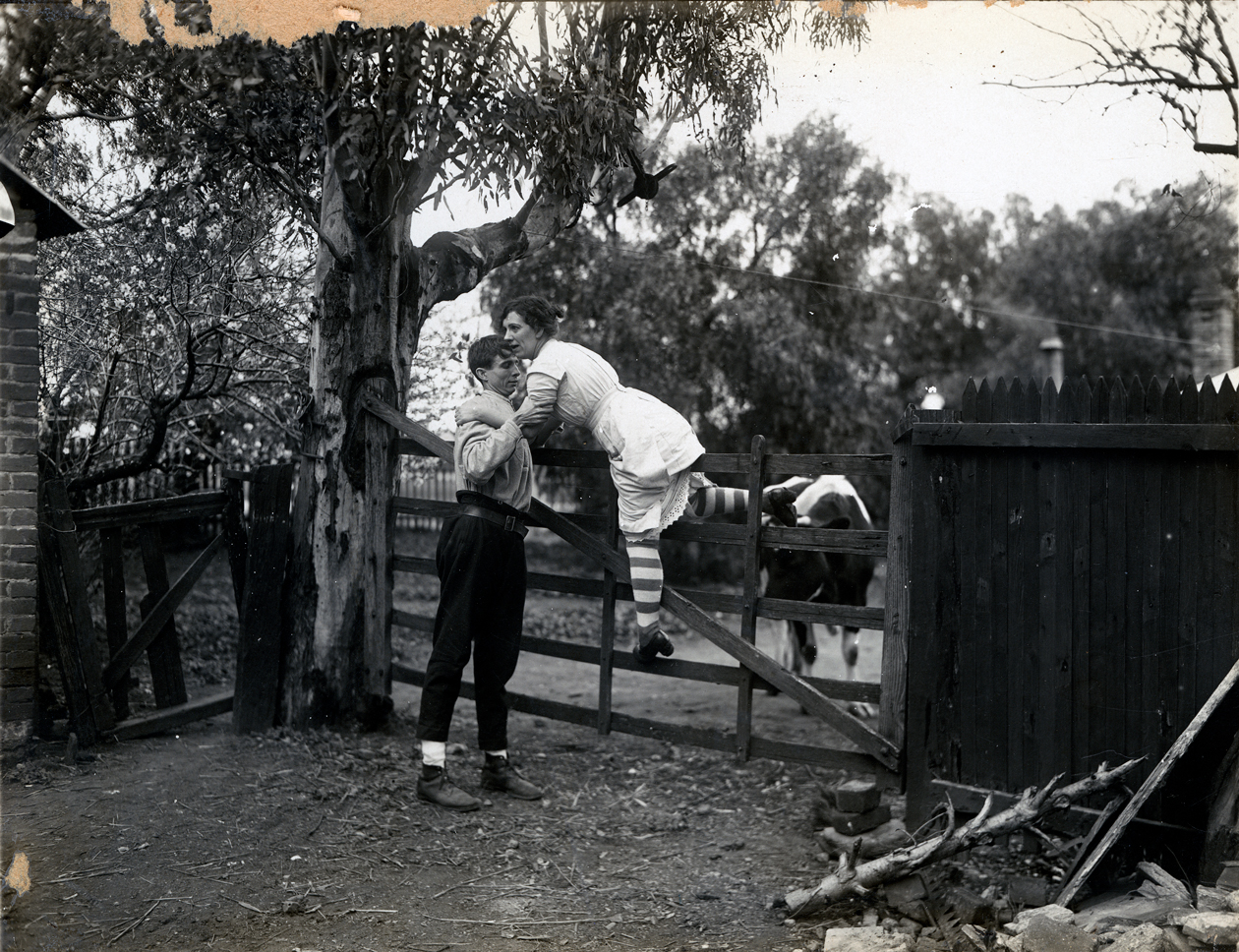
Still number two
A young woman looks with disapproval at a young couple, as they pose together outside the porch of a smart house of the art deco period. The couple also appears in character in still number three.
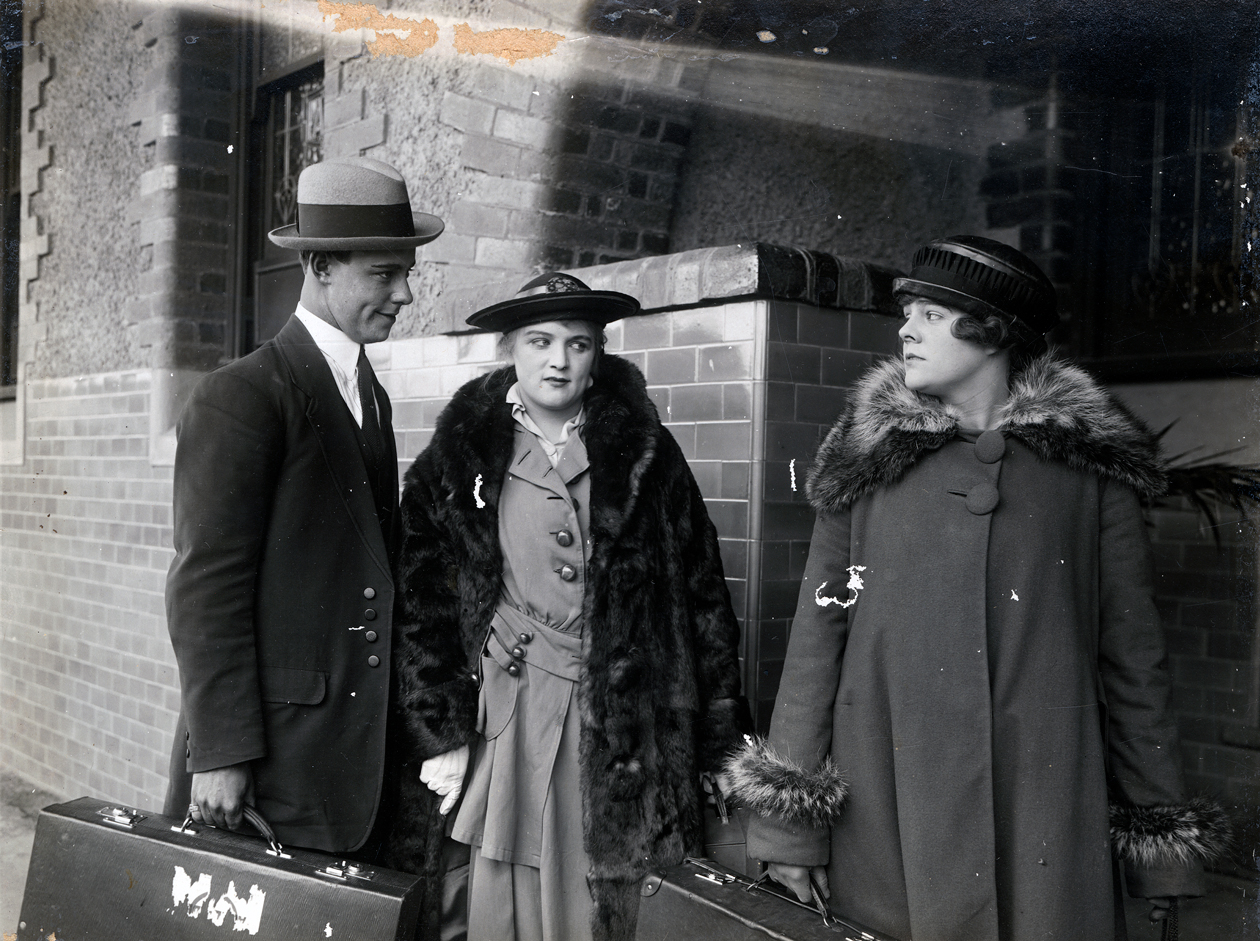
Our librarian suspects that the building featured in this film still is of a building that was built circa 1910, that no longer exists, but that it was located on the corner of Main Road and Laffers Road, Belair.
Still number three
A group of people look on with concern as two young women attempt to restrain a man from hitting another man who has fallen to the ground in a fight.
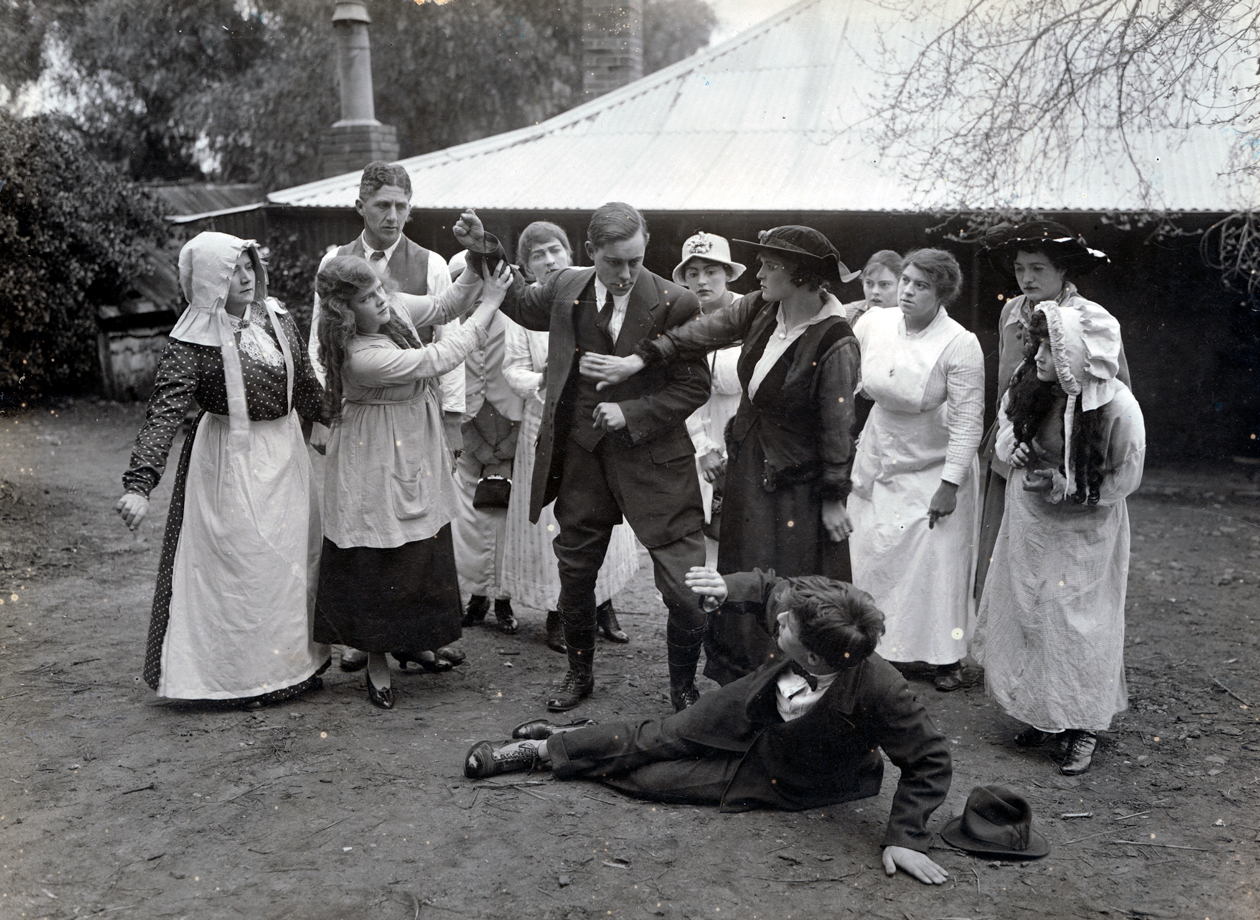
In this photograph we see June and May Henry (billed in 1919 as the Tivoli Twins) featured with Boyd Irwin, the older male onlooker on the left of this ‘fight’ scene. Irwin, a 38 year-old Englishman and actor, performed in Australia throughout the Great War. When Algie’s Romance went into production, Irwin was in various locations across South Australia starring in another Southern Cross Feature Film Company production, The Woman Suffers.
The fashions worn by women in the film reflect the wartime clothing before ladies in the 1920’s had their hair cropped, wore cloche hats and dropped their waistlines. The long ringlets of the ladies in the 1918 film are reminiscent of American film star Mary Pickford. The house in the photo dates to about 1910 and maybe one which was built on the Monalta Estate then demolished. Algie, played by Doogood, can be seen in the photos to have a passing resemblance to Charlie Chaplin.
The original farm cottage and farming land on the Monalta Estate had included a vineyard but by 1920 the vines had been removed, fruit trees were planted, which you can see in the background of the image. The farm cottage was demolished in the 1970’s, when the land became part of Blackwood Community Hospital, located behind the Belair Primary School oval on Laffers Road.
Our Librarian suspects that there was an original farm cottage built in 1846 on the Monalta Estate, and a description of the farm cottage by the National Trust correlates with the cottage in the above ‘fight’ scene image.
Still number four
In the following photo of the young calf being fed from a tin by one of the Henry twins, the tin bears the name of an Adelaide firm that existed between 1910-1919.
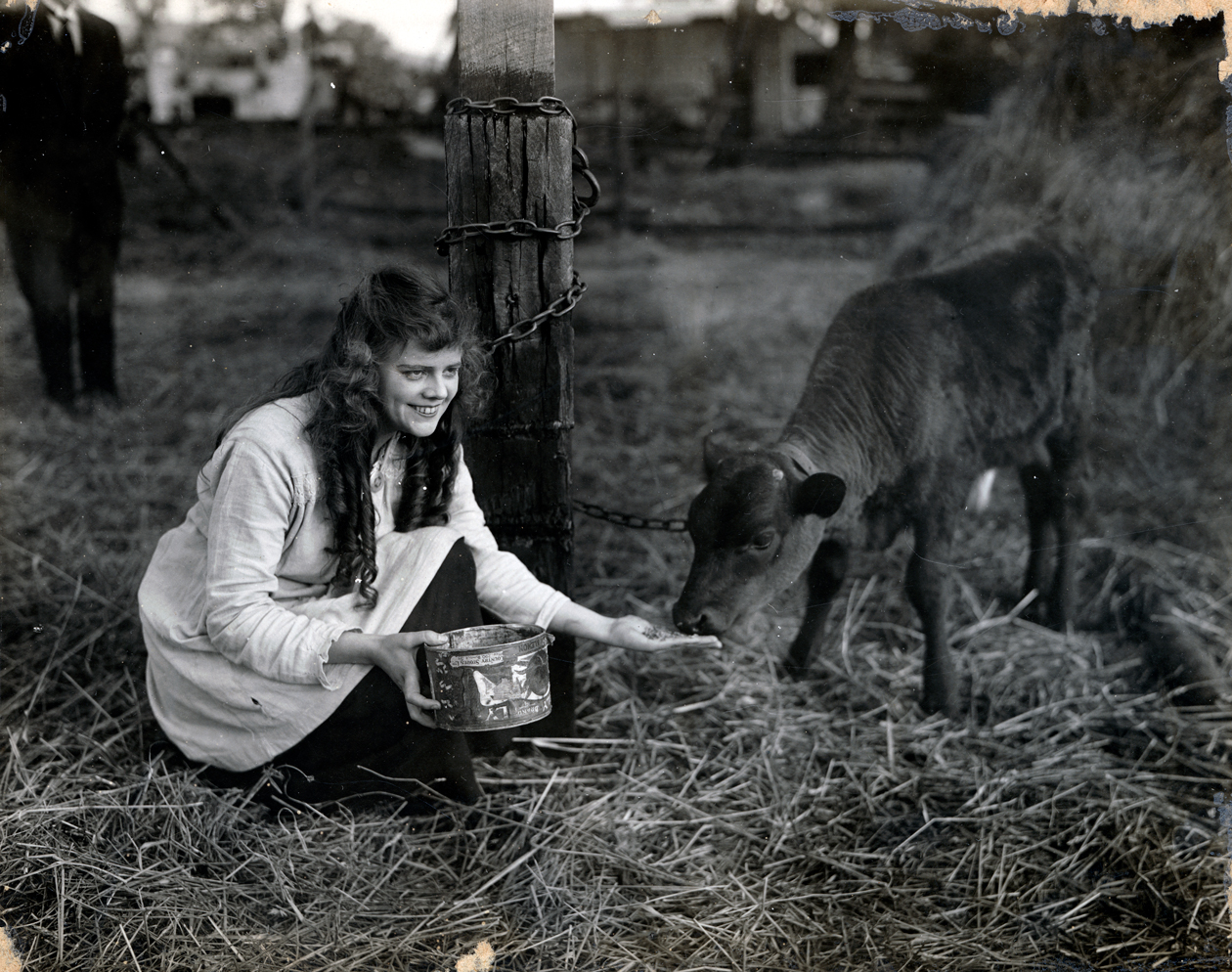
Can you help us?
Do you or your family have local knowledge or perhaps photographs from the time that could help our Librarian?
Or maybe you know people who worked on the film Algie’s Romance, or recognise a location featured? If so, we’d love to hear from you, via slsainfo@sa.gov.au